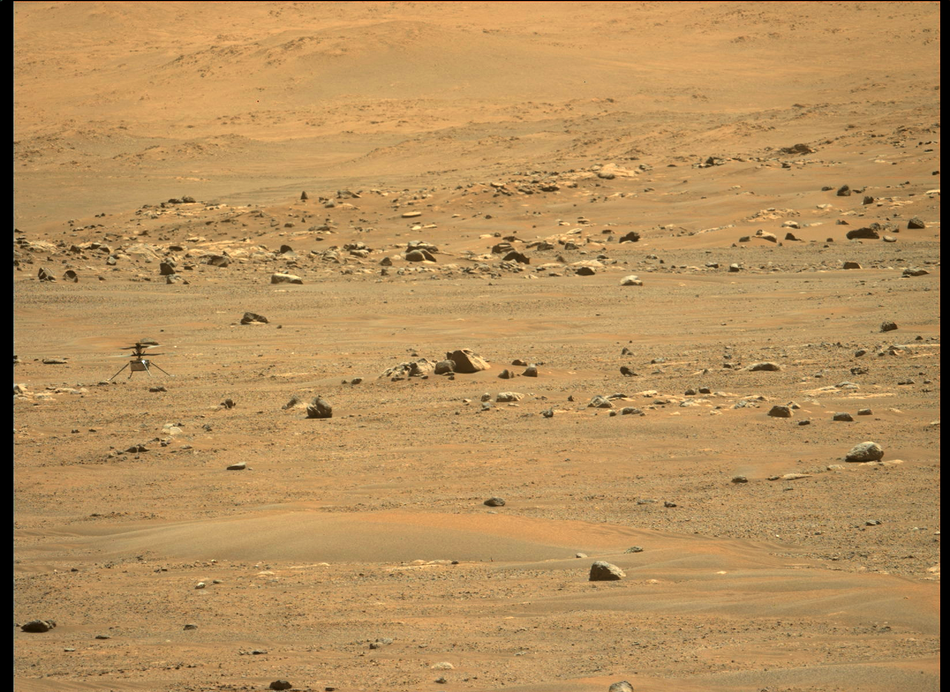Welcome home, Ingenuity.
The small helicopter that NASA sent to Mars as carry-on baggage for the Perseverance rover back in July 2020 finished what was originally supposed to be its final flight on Friday. But after a series of escalating successes for the little aircraft, NASA decided recently to extend Ingenuity’s mission by at least another month.
That turned the helicopter’s fifth and would-be final flight into a relocation exercise, with Ingenuity lifting off and embarking on a one-way trip to its new landing field. From here, NASA will stage another lineup of tests that will last no longer than through the end of August.

Say hello to the new home for NASA’s Mars helicopter, Ingenuity. The helicopter completed its fifth flight, and the final of its originally planned tests, on May 7. You can see Ingenuity parked off on the left side of this image, which was captured by the Perseverance rover.
Image: NASA/JPL-Caltech/ASU/MSSS
The fifth flight of Ingenuity clocked in at 108 seconds, with the helicopter flying higher than it has previously (by roughly double), at 33 feet. Its one-way trip to the new home traveled 423 feet across the Mars surface.
While the first phase of tests pursued the straightforward goal of proving that aerial exploration of Mars is possible, the second phase will shift focus more toward how aerial exploration can aid in our broader efforts to understand and map out one of Earth’s neighbors. NASA suggests these tasks will include “scouting, aerial observations of areas not accessible by a rover, and detailed stereo imaging from atmospheric altitudes.”
The important thing about this next stretch of tests is letting the Perseverance rover get back to its other work. While it ferried Ingenuity down to the Mars surface and has supported the little helicopter’s mission so far, Perseverance has other priorities that will move to the forefront now that NASA has entered a phase of Ingenuity’s life that wasn’t part of the original misison.
[embedded content]
“The plan forward is to fly Ingenuity in a manner that does not reduce the pace of Perseverance science operations,” said Bob Balaram, NASA’s chief engineer for Ingenuity at the space agency’s Jet Propulsion Laboratory.
“We may get a couple more flights in over the next few weeks, and then the agency will evaluate how we’re doing. We have already been able to gather all the flight performance data that we originally came here to collect. Now, this new operations demo gives us an opportunity to further expand our knowledge of flying machines on other planets.”
